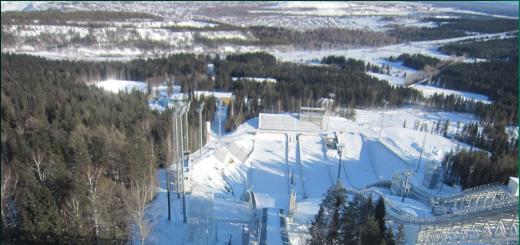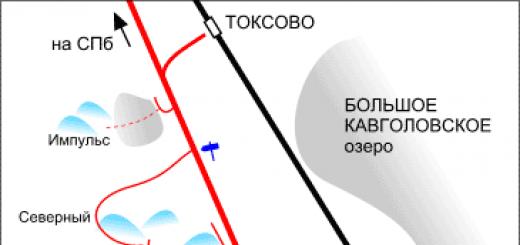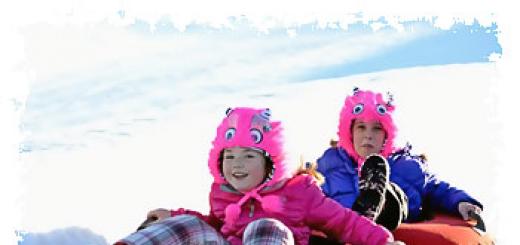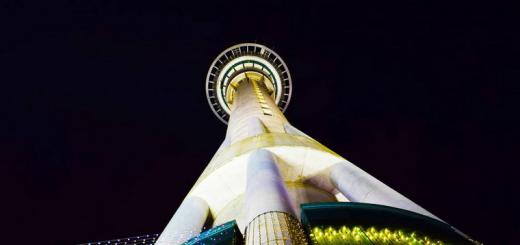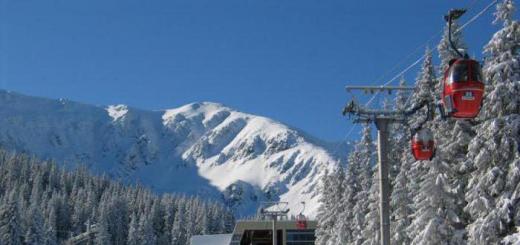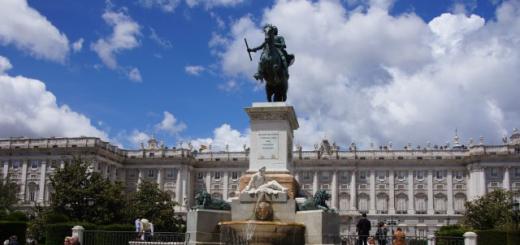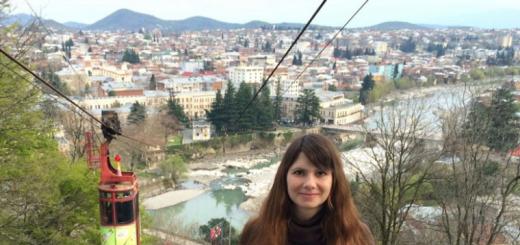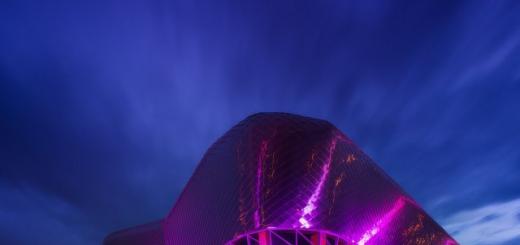I haven't updated this heading for a long time. But we have already discussed with you. Look who is interested before the trip, and we will continue about Iceland. So …
1. Iceland is one of the most sparsely populated countries in the world, with a population of about 320 thousand people, and before the Second World War the population of the country was only 50 thousand.
2. Since everyone in Iceland knows each other, when parting or divorcing, the couple always tries to maintain a good relationship. Cases when an ex-boyfriend does not communicate with an ex-girlfriend or ex-spouses do not talk to each other are extremely rare, because in any case, they have almost all friends and acquaintances in common.
3. Instead of surnames in Iceland - patronymics, that is, an analogue of our patronymic. The particle "sleep" (that is, son) or "dottir" (if it is a daughter) is added to the father's name, it turns out, for example, Silia Palmarsdottir, that is, Celia is the daughter of Palmars.
4. In the event that the father for some reason does not recognize the child, the son or daughter receives a matronym as a surname, that is, the same patronymic, but by the mother's name.
5. Since everyone in Reykjavik knows each other, the doors of houses are often left unlocked, car keys are thrown in cars, and children in strollers are left unattended at the entrance to a cafe, bar or shop.
6. In Reykjavik it is considered normal to go to the nearest grocery store in pajamas.
7. Residents of Reykjavik almost always pay for purchases with bank cards, even if they order coffee at a bar. Cash is not accepted here.
8. Icelanders are sure that blowing your nose is bad for your health, so in winter everyone here sniffs, that is, sorry, suck snot into themselves.
9. But spitting, on the contrary, is not considered indecent, even girls spit without any problems on the street and in public places.
10. In fact, Iceland in winter is not as cold as we used to think, the temperature here rarely drops below -6 degrees.
11. But in winter it is dark in Iceland, December 21 - on the shortest day of the year, dawn comes at 10.30, and the sun sets at 16.00. Summer to shift long nights long days come, compared to which the white nights in St. Petersburg are simply not about anything, in June Iceland the sun sets for only a couple of hours.
12. The lack of sunlight in winter is to some extent compensated by the northern lights, it can be observed constantly, so after a couple of weeks you no longer pay attention to it.
13. Since the sun does not shine in Iceland in winter, all residents of the country, in order to avoid rickets and other unpleasant diseases, must take fish oil, but not in liquid form, but in tasteless capsules.
14. Almost all residents of Iceland have a Facebook profile, according to the latest data, Iceland is an active country in the social network.
15. Even if a resident of Iceland, for some reason, does not have a Facebook profile, it can still be easily found on the Internet. All residents of the country, of their own free will, register on the ja.is website, where they indicate their first and last name, telephone number, address and the place on the map where their house is located.
16. In Iceland, if a person is well disposed towards you, he demonstrates this by touching you every now and then.
17. There are an order of magnitude more blondes in Iceland than brunettes, so local residents like to dye their hair in a darker shade.
18. In order to spend a night with an Icelandic girl, long courtship is not required, most Icelandic women, as they say, are easy going, which is why Italians and Spaniards love to come to Reykjavik so much.
19. Icelanders are very tolerant, Reykjavik regularly hosts a gay parade, since 2010 homosexual marriages have been allowed here, and the percentage of bisexuals in the country is very high.
20. The most popular professions in Iceland are artist, musician or designer. Every second bartender or waiter tries to get an education in a creative specialty, and at the same time plays in some rock or folk group.
21. For the reason described above, no one uses the services of designers, for example, in order to come up with a design for an apartment or a wedding dress. The inhabitants of Iceland are sure that each of them is his own artist, therefore they prefer to come up with the interior of the apartment and the design of the dress on their own.
22. Repairs in apartments are also done mainly with their own hands, without hiring workers.
23. Icelanders are crazy about Eurovision, they take the competition for young performers very seriously, and during the live broadcast the whole country is watching what is happening on TV.
24. There are no McDonald's restaurants in Iceland, the latter closed in 2008 during the crisis.
25. The most popular names in Iceland are male - Yon and female - Guvrun. Also, ancient mythological names are still common, for example, aðalsteinn, which means "main stone".
26. Icelanders, like Russians, like to use in everyday life not full, but abbreviated versions of names, so David in the diminutive Icelandic version will be Dubby, Guvrun - Gunna, Stefan - Steppi, Yon - Nonnie, etc.
27. The language of Iceland has practically not changed over the past 1000 years, so there are letters in it that have disappeared from English, plus the inhabitants of the country can read the old Viking sagas in the original without any problems.
28. The local population is generally very fond of reading, today, according to some sources, Icelanders are the most reading people in the world.
29. The price of wine in Iceland is often influenced not by the year of production or the quality, but by the strength. Thus, an expensive but light French wine can cost several times less than a 15-degree mumble.
30. There is no armed force in Iceland, and the Coast Guard does some of its functions.
31. Police officers in Iceland do not carry weapons, they are not given pistols.
32. Residents of Reykjavik for the most part park badly, they can throw their car right across the street. Having tow trucks and parking fines in the wrong place is of little help.
33. Icelanders try to use only renewable energy sources, gas and petrol are used here only to refuel cars and boats, and that is because electric cars have not taken root in the country.
34. There is no need to pay for water in restaurants and cafes, it is still poured from the tap. This water comes from local thermal springs, and therefore it is absolutely drinkable.
35. But hot tap water in Iceland smells of rotten eggs. The fact is that it also enters the water supply system directly from hot thermal springs, and they are rich in hydrogen sulfide.
36. Taking hot thermal baths is a popular option for evening entertainment in Reykjavik, the cost of the visit with the purchase of a subscription is about 5 euros.
37. In the houses of Iceland, as in Russia, there is a central heating system, which favorably distinguishes the country from Italy or France, where you have to pay for each activation of the heater.
38. Until the seventies of the twentieth century, Icelandic legislation allowed the inhabitants of the country to kill Turks with impunity. This is due to the fact that in the past, Turkish pirates have often plundered Icelandic ships and coastal villages.
39. To this day, Icelandic legislation allows the inhabitants of the country to kill polar bears for food.
40. Licorice is very popular in Iceland, it is added to any dishes, plus they produce chocolate sweets stuffed with licorice.
41. National dish of Iceland - haukarl - rotten Greenland shark meat cut into small pieces. If you do not chew and just swallow it is still quite edible, but if you chew the meat, you will feel the "magic" taste of urea. The fact is that the Greenland shark has no urinary tract and its meat contains poisonous ammonia. In order for the meat to be eaten, it is left to rot out underground or in the basement for three months. The taste of this dish, among other things, was mocked by the creators of The Simpsons in one of the episodes of the animated series.
42. In Iceland, fish is mainly eaten, and all dishes are watered excessively with mayonnaise, mustard and ketchup, after which the real taste of the fish may not be recognized.
43. Most Icelanders have very bad teeth, while Iceland is one of the main sugar-consuming countries, and Coca-Cola is also very popular here.
44. Most Icelanders still believe in elves and trolls, which makes it difficult to build a house or road. Before starting construction, here they consult with local "witches" on the subject of whether it is possible to move this or that stone, or whether an elf lives under it. Sometimes, in order not to "offend" the elf and move the stone, Icelanders have to perform magical rites, for example, keep the stone in honey for some time.
45.2,148 people in Iceland adhere to the pagan teachings of the Ásatrú Association, which is based on the revival of Icelandic and Norse pagan beliefs. This religion is officially accepted, and its ministers can perform a wedding ceremony, which is equivalent to the traditional registration of marriage.
46. In addition to the well-known Santa Claus in Iceland, there are 15 other Santa Claus of different types, by and large they are all elves, in which the locals believe.
47. Every major store in Reykjavik has a playground.
48. All Icelanders wear lopapeysa - a knitted lamb's wool sweater with a characteristic national pattern. We can say that this is the very example of a national costume that has not disappeared over time.
49. Icelanders pride themselves on having the oldest undisturbed parliament in the world, called Alþingi and founded in 930.
50. Residents of Iceland are very gullible, when they are hired, they do not ask a foreigner for recommendations from a previous job, but simply take the newcomer's word for it.
51. In the Icelandic Museum of Witchcraft and Magic, the so-called "nekrostany", made from the skin of the lower body of a dead man, are on display. To get them, the Icelandic sorcerer had to enlist the consent of a person during his lifetime, and after death, dig up the body from the grave and flay the skin in one piece. Then the ritual demanded to steal a coin from the widow and put nekroshtans in the scrotum along with a special sign drawn on a piece of paper. It was believed that wearing pants like this would get rich quick.
52. Every citizen of Iceland has access to the Íslendingabók website, a genealogical database containing information on the family ties of all Icelanders since the 18th century. The task of compiling such a base could be solved thanks to the not very large population of the state (just over 300 thousand) and the fact that Iceland throughout its history was weakly influenced by both emigration and immigration. Many young people use this site to check if their new lover is a cousin or cousin to rule out the possibility of incest. Another popular use of the site is to check the degree of relationship with famous personalities. For example, each Icelander can find out after how many generations he has been related by family ties with Bjork.
53. The most famous representatives of Icelandic folklore are the Huldufolk, or hidden people, who are often identified with the elves. According to legends, these creatures hide in the mountains, although some Icelanders build small houses for them in their gardens and even small churches in order to convert the elves to Christianity. Sometimes in Iceland, construction projects for buildings or communications are changed so as not to disturb the alleged habitats of the elves, and in 2004 Alcoa even had to get a certificate from a government expert that the chosen site for the construction of an aluminum smelter was free of hidden people. Polls show that the number of Icelanders who admit or are confident in its existence is greater than those who doubt or completely deny the elves.
54. Iceland is predominantly inhabited by coastal areas and people travel around the country mainly along the coastal strip. Historically, Icelanders call the north-western edge of the island west, north - north-eastern edge, east - eastern edge, and south - Reykjavik region. Therefore, linguistic incidents are possible: heading from the northwestern outskirts towards the northeastern outskirts, the Icelander says that he is going "north", although in fact he is moving east, and heading from the southwestern outskirts towards Reykjavik, that is, in fact north, the Icelander says he is going south.
55. Until the 1990s, Iceland had a law according to which a foreigner wishing to take Icelandic citizenship must adopt an Icelandic name or change his name according to the traditions of the Icelandic language. But for celebrities, exceptions were made. When the Soviet conductor and pianist Vladimir Ashkenazi emigrated to Iceland, the country's government added a new name to the official list of permitted names - "Vladimir Ashkenazi".
56. In the Scandinavian countries, dishes made from rotten or fermented fish are common. For example, the Icelandic hakarl dish is made from rotten shark meat, and the Swedish surstroemming is made from sour herring.
57. Most of the inhabitants of Iceland do not have the usual surname, but are designated by name and patronymic. For example, Magnus Karlsson is Magnus, son of Karl, and Anna Karlsdottir is Anna, daughter of Karl.
59. The Scandinavian countries (Norway and Iceland) have the highest fertility rates in Europe among the indigenous rather than immigrant population. The Scandinavians initially focused on improving the quality of life of the child, and not on increasing the number of births.
60. Detifoss waterfall, located in Iceland, is considered the most powerful waterfall in Europe: it discharges about 500 m³ of water per second. Splashes from it are visible at a distance of a kilometer, and in sunny weather the waterfall is certainly decorated with a rainbow.
62. For a long time, negotiations between representatives of the Scandinavian countries were conducted "in a Scandinavian way" (in Swedish, Norwegian or Danish), but in last years Scandinavian languages began to be replaced more often by English at the request of representatives of Finland and Iceland
63. The largest glacier in Europe, Vatna-Yokul (“a glacier that gives water”, 8.5 thousand square kilometers, which is equal to the area of all glaciers of the European subcontinent) is located in the southeast of the country.
64. According to European Union statistics, more than 25% of the energy consumed by Scandinavians comes from renewable sources. For comparison, we note that for other European countries this figure is, on average, only six percent.
65. According to experts, Iceland, Germany and Norway finance most of all health care - more than 9% of the state budget.
66 Reykjavik is the northernmost metropolis in the world (64 north latitude), founded in 874. Reykjavik got its name for the eruption of geothermal vapors from geothermal sources, and literally it means "Smoky Bay".
67. The widest "boiling" river in the world - Deidartunguver north of Reykjavik. The water consumption in these cascades of boiling water from hot springs is 225 liters. per second.
68. The longest living creature on Earth is found off the coast of Iceland. It turned out to be a clam. Scientists have counted the number of rings on its shell and found that the creature is 405-410 years old.
69. The territory of Iceland covers 103,300 square meters. km, of which glaciers occupy 11,000 square meters. km, and lakes - 2,700 sq. km. The country is rich in forests, stretching over an area of about
1,511 sq. Km. The most big lake in the country it is called Dingvallavatn, and the highest peak is Hvannadalshnukur. 70. More than 300,000 people live in the country, of which about 150,000 live in the capital. Part of the population settled along the coastal areas. Many interior regions of the country are not suitable for living. The average life expectancy of Icelanders is 80 years.
71. Since Iceland has many volcanoes, 30 of which have erupted over the past two hundred years, they are used to generate geothermal energy. The rivers flowing through the territory of the country provide it with hydroelectric energy. Since there are many rivers with hot water, the country receives heating that does not pollute the environment.
72. The Scandinavians settled in Iceland at the beginning of the 9th century. The founder of the capital is the Norse Viking Ingólfur Arnarson. Thus, people here use the Viking language, which has been perfected by many civilizations. The inhabitants of the island bear their father's names, not surnames. Consequently, members of the same family have different surnames, which can confuse foreigners.
73. Icelanders take advantage of the heritage of antiquity with some modern changes. They live in perfect harmony. There are many artists in the country who are specialists in the art of singing and composing.
74. At different times of the year, many colorful festivals are held here, themed exhibitions are often organized. The country has an excellent culinary tradition, where seafood delicacies play an important role. 75. Iceland is one of the first countries in the world to have a republican government. The country is now ruled by a parliament called Althing, with 63 members. These members are elected every four years. The head of state has no influence on the country's politics.
76. The country's economy is heavily dependent on fishing. Most of the people in the country work in the fishing industry and other related businesses. Today's government focuses on the tourism industry, and the export industry is also the second largest industry, close to the fishing industry. The bulk of the country's income comes from the export of seafood.
77. Iceland is a recognized member of the European Economic Area (EEA) and the European Free Trade Association (EFTA) .78. The many activities on the island are attracting more and more tourists. Among them are whale watching, bird watching, hiking, horse riding, skiing, cycling, fishing, kayaking and glacier excursions.
79. Less than one percent of the world's population will be able to pronounce the word Eyjafyatlayukutl. This is the most famous Icelandic volcano. Out of several thousand people surveyed, only 0.005% managed to pronounce this word.
80. Since July 1, 2010, striptease has been banned in Iceland. Today, this is the only European country where this kind of dance is prohibited. 81. Despite the strong physical condition of the majority of the population, the most widespread sport in the country is chess. In 1931, the parliament was dismissed for vacations due to the arrival of the famous Russian chess player Alexei Alekhin.
82. Today, more than 11% of Iceland is covered with glaciers. Parliament in Iceland has been operating since the tenth century, namely since 930, and is considered the oldest working parliament in the world. It still works today.
83. Reykjavik, the capital of Iceland, the most northern capital planet earth. Back in the ninth century, the pioneer of the island built a farm on the site of the capital, from which the country grew in all directions. His name was Ingolf Arnarson. Translated from the ancient Celtic language, Reykjavik reads "Smoking Bay" .84. In 1963 new island Sertsey appeared in the ocean off the southern coast of Iceland as a result of a volcanic eruption.
86. Iceland is the most big Island volcanic origin.
87. The Scandinavians settled in Iceland at the beginning of the 9th century. The first settler is the Norse Viking Ingolv Arnarsson.
88. Iceland produces 4 times more books per capita than the United States.
89. Iceland has a dedicated phallogical museum displaying 150 penises from over 40 mammalian species, as well as a collection of related items. So far, there is no human phallus in the exposition, but the curator of the museum has already secured consent to receive this exhibit after the death of an eighty-year-old farmer who is still in a "sexual" order.
90. The central part of the island in winter is so harsh and so similar to the lunar landscape that NASA worked with its astronauts to reach the lunar surface in Central Iceland.
91. Vigdis Finnbogadottir is the first woman president in Europe and the second in the world. Icelanders are very proud of this fact. She was elected in 1980 and remained in office for 4 terms until 1996.
92. The area of the country is 7 times larger than the area of the Moscow region.
93. The 1 Icelandic crown coin depicts a cod, 10 crowns a herring, 50 crowns a crab and 100 crowns a sea bass. The Icelandic currency is called isk for abbreviated form.
94. There are no trees in Iceland. Rather, there are individual trees and artificial plantings, but there are no dense forests. The first Icelandic settlers are to blame for this. When the field was depleted, they burned new site forests and sowed barley on it. Gradually, the forests on the island disappeared, and today soil erosion is one of the main problems of the country.
95. Icelanders are very proud of their language, and in every possible way resist the pernicious, as it seems to them, influence of other languages on Icelandic. There is even a special language commission, the main purpose of which is to protect Icelandic from the penetration of foreign words. When a foreign concept or definition comes into use in a country, the commission deliberately invents or finds an Icelandic equivalent for it.
96. There are few cats in Iceland.
97. There are no railways in Iceland at all. Traveling on normal Icelandic roads is preferable in a 4x4 jeep. Optimally - on a super jeep with huge, more than a meter, wheels.
The original article is on the site InfoGlaz.rf The link to the article this copy was made from is
Iceland - small state on the island of the same name. Despite the fact that Iceland is located far to the north, the hardworking descendants of the Vikings managed to recreate real corner heaven on earth. Iceland has been at the top of the list of countries with the highest living standards for many years. The harsh northern nature, the friendliness of the indigenous Icelanders, the incredible beauty of the landscapes - all this is undoubtedly worth visiting this region at least once.
- Due to severe weather conditions, the territory of Iceland was inhabited by one of the last on Earth - people came to this region only in the 9th century AD.
- The capital of Iceland, Reykjavik is the northernmost capital on Earth.
- Iceland is consistently among the ten most prosperous countries in the world.
- Icelandic people seriously believe in the existence of trolls and elves - for example, before the start of the design new road builders consult with experts in folklore, so as not to accidentally invade the possessions of these fantastic creatures.
- Icelanders often build small churches in their gardens, hoping to convert to Christianity the small Huldufolk people, who, according to legend, hide in the local mountains.
- The Icelandic Parliament is the oldest working in the world, it was first formed back in 930.
- Icelandic cuisine is widely known for its unusual dishes - for example, Icelanders eat slightly rotten shark meat (hakarl), as well as sheep thighs soaked in lactic acid.
- Horses are not allowed to enter Iceland for some unknown reason. If the horse is taken out of the country, it cannot be returned back either.
- Iceland has no armed forces of its own, and no firearms are issued to Coast Guard and police officers.
- Hot and cold water supplies to Icelandic homes are provided by local springs and geysers. The water in them is so clean that it is drinkable without additional filtration.
- The inhabitants of Iceland have patronymics, but no surnames. The name for the newborn is chosen from a special register. If the desired name is not there, you need to contact the authorities and agree on this issue with them.
- On the territory of Iceland there is no railways... Yes, none at all.
- There are practically no borrowings in the Icelandic language, due to which it has remained unchanged for more than a thousand years. It will not be a problem for an Icelander to read a book published several centuries ago.
- The widespread belief that Iceland is very cold is not true - for example, in January the air temperature averages -0.4 degrees.
- Modest in size Iceland due to its natural resources could provide energy to all of Europe (see).
- Until May 1, 1989, residents of Iceland were prohibited from selling and drinking beer. Today, the day of lifting the ban is almost a national holiday.
- Iceland is the world leader in sales of scientific literature.
- Almost all Icelandic residents (90%) have access to the Internet - even the United States cannot boast of such a widespread network.
- There is not a single mosquito in Iceland.
- Icelandic waterfall Dettifoss with a width of 100 meters and a height of 40 meters is the most powerful in Europe (see).
- There are 130 volcanoes on the territory of Iceland, almost half of which have erupted in the last 1000 years (see).
- Iceland is the only European country where striptease is prohibited by law. The ban was introduced in 2010.
- Iceland's Latrabjarga Cliffs are not only the westernmost point of Europe, but also the world's largest bird habitat.
- Iceland has the largest glacier on Earth (not counting those that shelter the poles) with the unpronounceable name of Watanjökull.
- Icelanders go to the movies more often than people in any other country in the world.
- Iceland has the largest number of children in the world (65%) born out of wedlock.
For most of us, Iceland is associated with the singer Bjork, who was born in this distant country, as well as the Vikings and the snow. But in Iceland, it turns out, there is wonderful nature with geysers, volcanoes, glaciers and waterfalls. Iceland's nature is a source of inspiration for many photographers and artists. No matter when you visit Iceland (summer or winter), the Icelanders will always welcome you very hospitably.
Geography of Iceland
Iceland is located northwest of Great Britain in the northern part Atlantic Ocean, where he meets the North Arctic Ocean... Iceland is an island. The total territory of Iceland, together with all the islands, is 103,000 sq. Km.
14.3% of Iceland's territory is occupied by lakes and glaciers. Only 23% of Iceland's territory has vegetation that corresponds to the geographic location of this state. Most large lakes in Iceland - Þingvallavatn, Lagarfljót and Mývatn.
Iceland has several volcanoes, some of which are active. Now the most famous Icelandic volcano is Eyjafjallajokudl, due to the eruption of which in 2010 air traffic was paralyzed throughout Europe.
The most high peak Iceland - Hvannadalshnukur peak, whose height reaches 2109 meters.
Capital
The capital of Iceland is Reykjavik, which is now home to more than 125 thousand people. Historians believe that the settlement of people on the territory of modern Reykjavik existed already in the 9th century.
Official language
In Iceland, the official language is Icelandic, which is a Scandinavian language.
Religion
More than 77% of Icelanders are Lutherans (Protestants) belonging to the Church of Iceland. Another 10% of Iceland's inhabitants are Catholics.
State structure
According to the constitution, Iceland is a parliamentary republic, the head of which is a President elected by direct universal suffrage for 4 years.
Legislative power belongs to the unicameral Parliament - Althingi, consisting of 63 deputies.
The main political parties in Iceland are the Social Democratic Alliance, the Independence Party, the Green Left and the Progressive Party.
Climate and weather
The climate in Iceland is subarctic maritime, the same as, for example, in Alaska. The warm current of the Gulf Stream has a decisive influence on the Icelandic climate. On the south coast Iceland's climate is noticeably milder than the northern coast. The average annual air temperature in Iceland is + 5C, and the average annual precipitation is 779 mm.
The tallest average temperature air in Iceland is observed in July and August - + 14C.
Average air temperature in Reykjavik:
- January - 0С
- February - + 0.5C
- March - + 1.5C
- April - + 4C
- May - + 7C
- June - + 10C
- July - + 11.5C
- August - + 11C
- September - + 8C
- October - + 5C
- November - + 2C
- December - 0С
Sea in Iceland
In the north, Iceland is washed by the Greenland Sea, in the northwest, the Danish Strait separates this country from Greenland, and in the east is the Norwegian Sea.
Rivers and lakes
 About 14.3% of Iceland's territory is occupied by glaciers and lakes. The largest lakes are Þingvallavatn, Lagarfljót and Mývatn.
About 14.3% of Iceland's territory is occupied by glaciers and lakes. The largest lakes are Þingvallavatn, Lagarfljót and Mývatn.
Iceland has many rivers, most of which originate in glaciers. The longest Icelandic rivers include Tjorsau (230 km) in the south of the country and Jökulsau au Fjöllum in the northeast.
There are a lot of salmon in Icelandic rivers, and trout in the lakes.
History
Iceland was settled by Norse Vikings in the 9th century. The first settlement on the site of modern Reykjavik was founded in 874 by Ingolf Arnason.
In 1262, Iceland fell under the rule of Norway. Around the middle of the 16th century, Lutheranism began to spread in Iceland. Subsequently, this country became completely Lutheran.
In 1814 Spain became part of Denmark. In the middle of the 19th century, a movement developed in Iceland that fought for the independence of this country (by peaceful means). As a result, Denmark recognized Iceland's independence in 1918. Thus, the Kingdom of Iceland was proclaimed, having an allied union with Denmark. In June 1944, Iceland was recognized as an independent republic.
In 1946, Iceland was admitted to the UN, and in 1949 it became a member of the NATO military bloc.
Icelandic culture
The origins of Icelandic culture go back to Norwegian traditions. This is due to the fact that it was the Norse Vikings who first settled Iceland.
Some Viking traditions are still preserved in Iceland. So, at the end of January, Icelanders celebrate Men's Day (Bóndadagur). On this day, Icelandic men used to jump around their house while singing songs loudly. In this way, they tried to appease the harsh January weather. Nowadays, few Icelanders jump around their houses on Men's Day, but on this day women give them various gifts and flowers.
At the end of February, Iceland celebrates Women's Day (Konudagur). On this day, Icelandic men bring coffee to their women in bed in the morning and give them flowers.
Icelandic cuisine
The main products of Icelandic cuisine are fish, meat, vegetables, dairy products, cheese. We advise tourists in Iceland to try the following traditional local dishes:
- Hangikjöt - smoked lamb
- Harðfiskur - dried fish;
- Saltkjöt - salted lamb;
- Bjúgu - smoked sausage;
- Þorramatur - pickled meat or fish (including shark meat);
- Lax is a salmon dish.
The traditional Icelandic soft drink, Skyr, is made from sour milk and resembles yogurt.
When it comes to alcoholic beverages in Iceland, the inhabitants of this country prefer beer and the local potato vodka with caraway seeds Brennivín.
Iceland landmarks
Although Iceland is a very small country, there are many interesting places for tourists. In our opinion, the top ten Icelandic attractions include the following:

Cities and resorts
The largest Icelandic cities are Habnarfjordur, Akureyri, Kopavogur, and of course Reykjavik.
There are a lot of geysers and lakes in Iceland that have medicinal properties. Therefore, it is not surprising that there are several geothermal resorts in this country. The most famous of them is located on the Blue Lagoon Lake.
Souvenirs / shopping
What is Iceland interesting and famous for? 9 facts about the country that cause confusion, admiration, surprise and sometimes baffle.
Despite the harsh northern climate, remoteness and by no means cheap services, Iceland is popular tourist destination... Even seasoned travelers who have traveled halfway around the world say Iceland is the most exciting experience they've ever had, and rarely seen elsewhere.
So what makes Iceland the most interesting?
Reykjavik looks like a provincial town, but it is the capital of the "Iceland"
1. Names of cities, streets and major landmarks. Don't try to remember them. All that will remain in memory is Reykjavik and its main shopping street, Leygavegur. Words like "Hallgrimskirkja" (a skyscraper with a view of the entire city from the top) will have to be written down. The names of glaciers, volcanoes and waterfalls are also difficult to pronounce.
2. Wherever you go, there will be waterfalls everywhere. Driving through the fjords, you gradually get used to the fact that this is an ordinary landscape. The highest waterfall is "Glymur", but there are more beautiful waterfalls for example, Hreinfossar near Borgarnes or the huge cascade of Dynjandi waterfalls. It is difficult to list even the most beautiful waterfalls in Iceland, there are so many of them.
The most a large number of tourists in Iceland are concentrated in the south (the route is called the "Golden Circle"). This is partly due to the proximity to the capital and the fact that there are a large number of waterfalls.
Remember that you may need a raincoat to keep you dry. At an air temperature of +13 (even at the height of summer), splashing water is not a very pleasant thing.
3. If you come to Iceland in July, you will have another unforgettable sight: the whole country is covered with purple lupine flowers, among which flocks of sheep and horses roam freely.
4. The northern sun is very insidious and shines constantly in summer. Therefore, despite the cool weather, Iceland needs sunscreen. The main piece of clothing is not a jacket, as one might think, but a swimsuit, because hot baths are everywhere here.
5. What is Iceland famous for in the first place? , which amazes not only with water of amazing color, but also the number of people who want to visit it.
Despite the fact that the lagoon is called a "tourist trap", swimming in it will be remembered for a long time. Although it will be rather not “bathing”, but soaking, since the depth of the lagoon is not more than 1.6 m. Entrance ticket costs from 35 to 165 euros, depending on the selected procedures. A similar geothermal source in the north of the country in Myvatna is no worse.

What's interesting about Iceland? First of all, waterfalls!
6. In the western part of the island, it seems that you are on the lid of a boiling cauldron. Hot springs burst from the ground and steam spreads around. In the north there is a place called "Hverir", where all this turbulence smells of sulfur, and there is no vegetation. No wonder the crater of the nearby volcano bears the name "Viti", which means "hell" in Icelandic.
The crater itself looks very peaceful and has long been filled with turquoise water, but the surrounding landscape bears little resemblance to the landscape of planet Earth.
7. Unusual beaches with absolutely black sand and basalt rocks in the form of pillars.
8. Another miracle of Iceland - dark tunnels several kilometers long... If a car is moving towards you, you must blink your headlights and drive into one of the marked safe zones.
Remember that in Iceland you will need a raincoat to stay dry. At an air temperature of +13, splashing water is not a very pleasant thing.
9. It would seem Iceland and diving- incompatible concepts. However, in national park Thingvellir suggests donning a warm wetsuit and snorkelling to explore the rift between the North American and Eurasian tectonic plates. The entertainment is not for the faint of heart, because after half an hour in the icy water it seems that the nose is already frozen.
The largest number of tourists in Iceland is concentrated in the south (the route is called the "Golden Circle"). This is partly due to the proximity to the capital and the fact that there are a large number of waterfalls.


